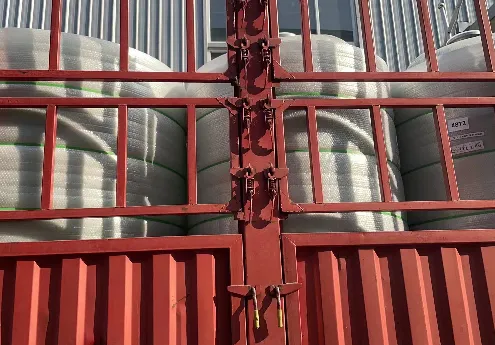loading...
- No. 9, Xingyuan South Street, Dongwaihuan Road, Zaoqiang County, Hengshui, Hebei, China
- admin@zjcomposites.com
- +86 15097380338
- Welcome to visit our website!
Understanding the Cost Factors Influencing Fiberglass Rebar Pricing in Construction Projects
The Cost of Fiberglass Rebar Understanding Prices and Advantages
Fiberglass rebar, also known as GFRP (Glass Fiber Reinforced Polymer) rebar, has gained popularity in construction and civil engineering due to its remarkable properties and advantages over traditional steel rebar. As with any construction material, understanding the pricing of fiberglass rebar is essential for making informed decisions in project budgeting and planning.
What is Fiberglass Rebar?
Fiberglass rebar is composed of glass fibers embedded in a polymer resin, resulting in a lightweight, corrosion-resistant alternative to steel reinforcement bars. This innovative material is primarily used in applications where traditional steel rebar may be prone to rust, such as in coastal areas, water treatment facilities, and structures exposed to deicing salts.
Factors Influencing the Price of Fiberglass Rebar
The price of fiberglass rebar can vary significantly based on several factors
1. Material Composition The quality and type of glass fiber used in the manufacturing process can affect the cost. High-quality fiberglass with specific properties may result in a higher price point.
2. Diameter and Length Just like steel rebar, fiberglass rebar is produced in various diameters and lengths. Larger diameters and longer lengths typically command higher prices due to the increased material requirements.
3. Manufacturing Process The production technique significantly influences the overall cost. Advanced manufacturing processes that ensure consistency and specific mechanical properties could lead to increased expenses.
4. Market Demand The demand for fiberglass rebar in construction projects can influence its price. In regions experiencing rapid construction growth or facing shortages, prices may rise.
fiberglass rebar price

5. Shipping and Availability Geographic location also plays a vital role in pricing. In areas where fiberglass rebar is less common, shipping costs can further increase the final price due to limited local suppliers.
6. Supplier Pricing Different manufacturers may have varying pricing structures based on their production capacity, distribution networks, and overall business strategy. It’s crucial to shop around and compare quotes from various suppliers.
Average Price Range
As of October 2023, the price of fiberglass rebar generally ranges from $100 to $400 per ton, depending on the aforementioned factors. This price range may be significantly higher compared to traditional steel rebar, which typically ranges from $300 to $800 per ton. However, when evaluating the cost, it is essential to consider the long-term benefits and savings that fiberglass rebar can provide.
Advantages of Fiberglass Rebar
While the initial cost may be higher, using fiberglass rebar often leads to savings over the life of a structure. Some of the benefits include
- Corrosion Resistance Unlike steel, fiberglass does not corrode, which can lead to lower maintenance costs over time. - Lightweight Fiberglass rebar is much lighter than steel, which can reduce transportation costs and make handling on-site easier. - High Strength-to-Weight Ratio It exhibits excellent tensile strength and can handle substantial loads, making it suitable for various engineering applications. - Non-magnetic Properties For projects in sensitive environments such as MRI facilities, fiberglass rebar presents an advantage over steel.
Conclusion
In summary, the price of fiberglass rebar is influenced by several factors, including material quality, size, manufacturing processes, and market conditions. While it may represent a higher initial investment compared to traditional steel rebar, the long-term benefits, including reduced maintenance costs and enhanced durability, often justify the expense. As the construction industry continues to evolve and prioritize sustainability and efficiency, fiberglass rebar is poised to become an increasingly popular choice for new projects, paving the way for more innovative and durable infrastructure.
-
The Rise of FRP Profiles: Strong, Lightweight, and Built to LastNewsJul.14,2025
-
SMC Panel Tanks: A Modern Water Storage Solution for All EnvironmentsNewsJul.14,2025
-
GRP Grating: A Modern Solution for Safe and Durable Access SystemsNewsJul.14,2025
-
Galvanized Steel Water Tanks: Durable, Reliable, and Ready for UseNewsJul.14,2025
-
FRP Mini Mesh Grating: The Safer, Smarter Flooring SolutionNewsJul.14,2025
-
Exploring FRP Vessels: Durable Solutions for Modern Fluid HandlingNewsJul.14,2025
-
GRP Structures: The Future of Lightweight, High-Performance EngineeringNewsJun.20,2025
